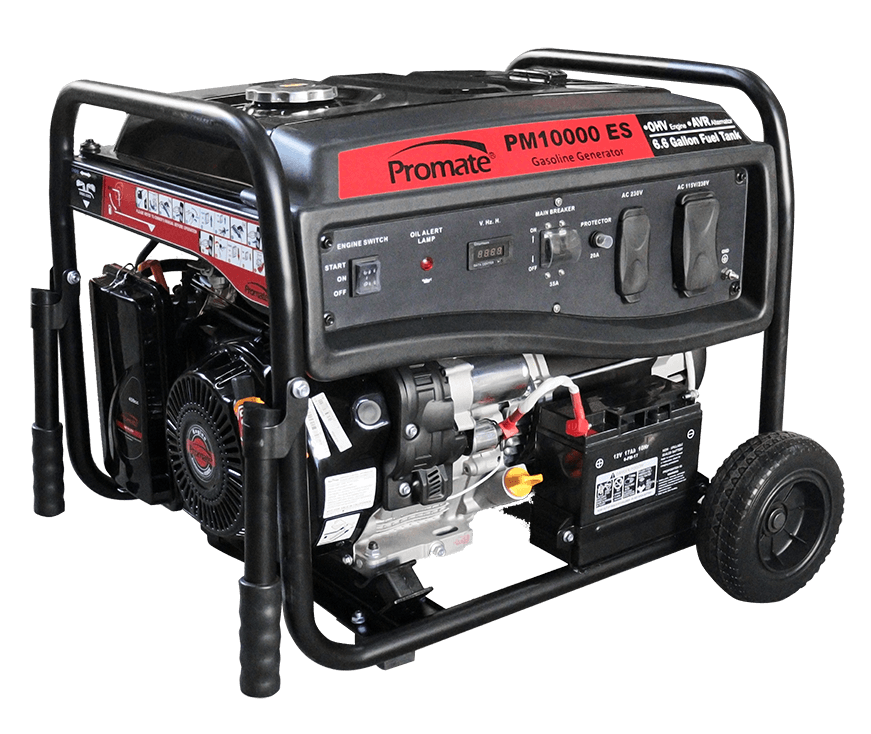When it comes to ensuring your food stays fresh during a power outage, knowing the right size generator to power crucial appliances like a refrigerator and deep freezer is essential. At TheKitchenApplianceDad.com, we understand how critical it is to choose the correct generator size not only for efficiency but also to avoid unnecessary expenses and potential safety issues. In this comprehensive guide, we’ll walk you through the factors to consider and provide a straightforward formula to help you make an informed decision.
Understanding Power Requirements
Refrigerators and deep freezers vary widely in size and model, and consequently, in their power requirements. Generally, the power needed to run a refrigerator ranges from 100 to 800 watts, while a deep freezer typically requires 500 to 1000 watts. However, the starting power (surge watts) is significantly higher due to the initial energy required to start the compressor.

Surge vs. Running Power:
- Surge Power: This is the initial burst of power needed to start the motor of the appliance. For refrigerators and freezers, this can be 2-3 times the running power.
- Running Power: This is the continuous power needed to keep the appliance operating after it has started.
Calculating Total Power Needs
To determine the appropriate generator size, you need to calculate both the running watts and the surge watts required:
- List the Appliances: Write down each appliance you plan to run on the generator.
- Gather Power Information: Check the manufacturer’s plate on each appliance for power requirements or consult the user manual.
- Calculate Total Running Watts: Add up the running watts of each appliance.
- Identify Highest Surge Watts: Identify which appliance has the highest surge watts requirement.
- Calculate Total Power Requirement: Add the highest surge watts to the total running watts of all other appliances.
Example Calculation:
- Refrigerator: 200 running watts, 600 surge watts
- Deep Freezer: 500 running watts, 1500 surge watts
Total Running Watts: 200 (refrigerator) + 500 (deep freezer) = 700 watts
Total Power Requirement: 700 (total running watts) + 1500 (highest surge watts from deep freezer) = 2200 watts
Choosing the Right Generator
With the total power requirement calculated, you can now choose a generator that matches or exceeds this wattage. Generators are typically labeled with both running watts and starting (surge) watts, so it’s important to ensure that both values meet your needs.
Types of Generators:
- Portable Generators: These are more affordable and easier to move around, making them ideal for temporary use during outages.
- Inverter Generators: These provide cleaner power which is better for appliances with sensitive electronic components, such as modern refrigerators and freezers.
- Standby Generators: These are permanently installed and automatically start during a power outage, providing a seamless power supply.
Recommended Generator Size: For the example above, a good choice would be a generator that offers at least 2300 surge watts and 800 running watts. This ensures it can handle the initial start-up surge and continue running both appliances.
Additional Considerations
- Fuel Type: Generators run on various fuels including gasoline, diesel, propane, and natural gas. Consider availability and storage safety when choosing a fuel type.
- Noise Level: Especially in residential areas, the noise level of a generator can be a concern. Inverter generators are typically quieter.
- Maintenance: Regular maintenance is crucial for the longevity and efficiency of your generator. Always follow the manufacturer’s guidelines.
Safety Tips
Using a generator safely is as important as choosing the right one. Here are some essential safety tips:
- Operate in Open Areas: Never run a generator indoors or in enclosed spaces to avoid carbon monoxide poisoning.
- Proper Ventilation: Ensure adequate ventilation if the generator is near your home.
- Dry Operation: Keep the generator dry and operate on a dry surface under a canopy-like structure.
- Regular Checks: Regularly check and maintain your generator according to the manufacturer’s instructions.
Key Takeaways
- Calculate Power Needs: Determine both the running and surge watts of your refrigerator and deep freezer.
- Choose the Right Generator: Select a generator that meets or exceeds the combined surge and running wattage requirements.
- Consider Generator Type: Decide between portable, inverter, and standby generators based on your specific needs.
- Safety First: Always prioritize safety by operating the generator in well-ventilated, open areas and following all manufacturer guidelines.
By following these guidelines, you can ensure that your food preservation needs are securely met during a power outage without risking safety or efficiency. Whether you’re dealing with seasonal storms or unexpected blackouts, a properly sized generator can be a game-changer for maintaining normalcy and comfort inyour home. At TheKitchenApplianceDad.com, we are committed to helping you make the best choices for keeping your kitchen running smoothly, no matter the circumstances.


